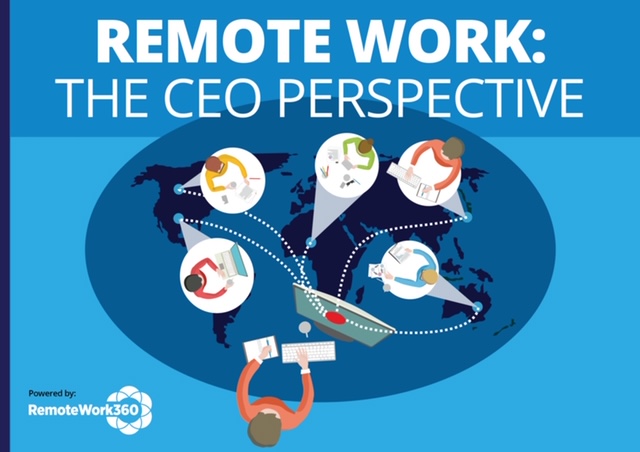5 things remote companies should consider when hiring for cultural fit
- Home
- Supplier Directory
- Attendance & Monitoring
- Collaboration & Communication
- Cloud Telephony & VOIP
- Collaboration & Secure File Sharing
- Communication Software
- Creative Tools
- Culture Building
- Interactive presentations/screen sharing
- Messaging Tools
- Online Training
- Productivity
- Project Management
- Shared workspaces
- Time Tracking
- Video Conferencing
- Virtual Water Cooler
- Web Developer tools
- Finance/Accounting
- HR/Talent Management
- IT
- Managing Remote Teams
- Productivity
- Project Management
- Remote Workplace Wellness
- Sales & Marketing
- eNewsletter
- Events / Education
- About Us
- News
HR/Talent Management, Recruitment/RPO
ByHeidi Williams
5 things remote companies should consider when hiring for cultural fit
By Julia Masselos
Julia is the Marketing Lead at Toggl Hire, a pre-employment skills testing tool designed to make hiring easier, faster, and fairer.
You’ve shortlisted your top-qualified candidates and are calling them in for interviews. But you’ve never hired remotely for a remote company before, and you’re not sure how to gauge cultural fit through a Zoom interview! Don’t worry, here are 5 things remote companies should consider when hiring for cultural fit.
1. Previous remote work experience and expectations
Firstly and most obviously, ask your candidates about their past remote work experience. Granted, 2020 has given almost everybody some form of remote work experience, so you’ll have to dig a little deeper than that. Ask your candidates about their motivation to work remotely. What are their expectations for this kind of lifestyle? You want to make sure that your candidates are applying to your company because they’re excited about what you’re offering – not because you were one of 15 companies on a remote job board.
A good question to ask when trying to discern this is:
“What kind of drawbacks do you imagine might come with the remote work life?”.
Usually the answers will give you a pretty clear indicator of which candidates have thought their decisions through, and which might be misguided in their expectations.
2. Familiarity with asynchronous communication

This point is less relevant for companies who use synchronous communication. However, if your company has adopted asynchronous communication, you’re going to want to ensure your candidates are organized enough to thrive in this environment.
(Synchronous communication = expecting replies to messages/emails in real-time, usually within set working hours, i.e. most offices
Asynchronous communication = allowing a delay in responses, not expecting immediate answers, sometimes up to 24h later, i.e. most remote-first companies)
Like any shifts in behavior, adjusting from a synchronous to an asynchronous environment takes time. Slack will be much quieter than you’re used to. People will not chase you for things. Collaboration over chat comes less naturally (though this isn’t always the case and can be built-in with effort). You therefore want a candidate who is proactive, organised, forward-thinking, and internally motivated to do their best.
Some things to consider while interviewing candidates:
“Does this seem like the kind of person who needs hand-holding?”
“Can they plan their cross-functional projects far enough in advance that they don’t need last-minute questions answered, since someone might not be available to answer them at that moment?”
3. Give them the chance to show, not tell, who they are

A company is a group of people, and company culture is the emergence of how these people’s personalities interact. When hiring for cultural fit, it is important to look beyond professional soft skills and get to know the personality beneath.
When hiring for cultural fit, set aside 5-10 minutes at the end of the interview slot to discuss the candidate’s hobbies and interests outside work. Maybe some of them align with popular hobbies on the existing team and they’ll fit right in! After all, when you spend one-third of your life with your colleagues than your family, it pays to get to know them on a personal level.
Plus, building rapport like this shows you’re taking a personal interest in the candidate, which will undoubtedly give them a great experience and association with your employer brand.
4. Give a little, get a little

Candidate-interviewer relationships are like all other relationships. You gotta give a little to get a little. A good litmus test for gauging cultural fit? Sprinkle some references to internal culture in the dialogue and see how the candidate reacts.
There’s a few ways you can do this:
- Mention or describe your monthly (virtual) social gathering
- Highlight the different interests of some team members
- You could even bring up an inside joke if it feels relevant to the conversation, and appropriate for the setting.
See how your candidate reacts. Some might seem put-off, or not have much to say in response – others might immediately click with what you’re sharing and relay anecdotes, interests, or jokes of their own. In any case, you’ll know when a natural fit arises.
5. Go with your instinct

The truth is, if you’ve been working remotely for a while and are senior enough to be in charge of hiring for a position, the odds are your gut instinct is pretty sharp. All other factors being equal – skills, attitude, potential, and cultural fit – sometimes your hiring decision will just be down to gut instinct.
Sometimes, a candidate resonates with you for reasons we can’t really articulate. Once possible unconscious biases have been discounted as said reason, don’t be afraid to make that final call based on your intuition.
Wrapping up
In conclusion, there are a few different elements remote companies should consider when hiring for cultural fit. Identify candidates’ motivations for wanting to work remotely, their aptitude for communicating effectively, and their personal interests outside work. All things being equal, sometimes it is best to rely on your gut for final hiring decisions. Like with anything else, the more you do it, the easier it becomes. Happy hiring!
Related Posts
An estimated 86.3% of San Francisco employees are working from home, the highest rate among 10 major ...
May 11, 2021
In the third instalment of her blog - you can catch the first, on maintaining creativity here and ...
January 22, 2021
The different “kinds” of remote: finding the right fit your business Covid-19 has turned our world ...
January 14, 2021
RemoteWork360
RemoteWork360.com is powered by Chief Executive Group, which exists to improve the performance of business leaders, build communities and strengthen society.
Latest Insights
COPYRIGHT ©2020 REMOTEWORK360. ALL RIGHTS RESERVED.



